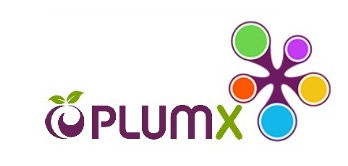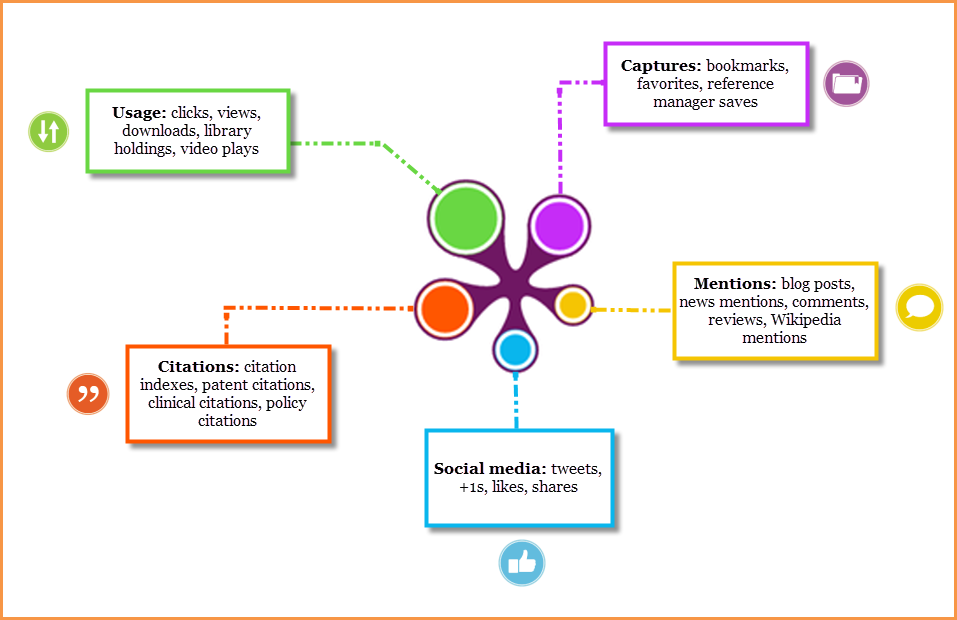Discover how others interact with your articles: PlumX Metrics
Article metrics (also known as altmetrics), immediately measure awareness and interest and give us new ways to uncover and tell the stories of article. PlumX Metrics are comprehensive, article-level metrics that provide insights beyond traditional citation metrics.

PlumX Metrics provide insights into the ways people interact with individual pieces of research output (articles, conference proceedings, book chapters, and many more) in the online environment. Collectively known as PlumX Metrics, these metrics are divided into five categories to help make sense of the large amount of data involved and enable analysis by comparison. PlumX gathers and collates appropriate research metrics for all types of scholarly research output. In a competitive research landscape, PlumX offers metrics to support your research impact footprint along with analysis to assist in case studies or reporting requirements.
Categorizing the metrics enables analysis as you can compare like with like. Additionally, as the number of metrics sources grow, categorizing them allows you to a multi-level view of the activity - from high-level to detailed.

The Five Categories
Citations – This is a category that contains both traditional citation indexes such as Scopus, as well as citations that help indicate societal impact. Examples: citation indexes, patent citations, clinical citations, policy citations
Usage – A way to signal if anyone is reading the articles or otherwise using the research. Usage is the number one statistic researchers want to know after citations. Examples: clicks, downloads, views, library holdings, video plays.
Captures – Indicates that someone wants to come back to the work. Captures can be an leading indicator of future citations. Examples: bookmarks, code forks, favorites, readers, watchers.
Mentions – Measurement of activities such as news articles or blog posts about research. Mentions is a way to tell that people are truly engaging with the research. Examples: blog posts, comments, reviews, Wikipedia references, news media.
Social media -This category includes the tweets, Facebook likes, etc. that reference the research. Social Media can help measure “buzz” and attention. Social media can also be a good measure of how well a particular piece of research has been promoted.














